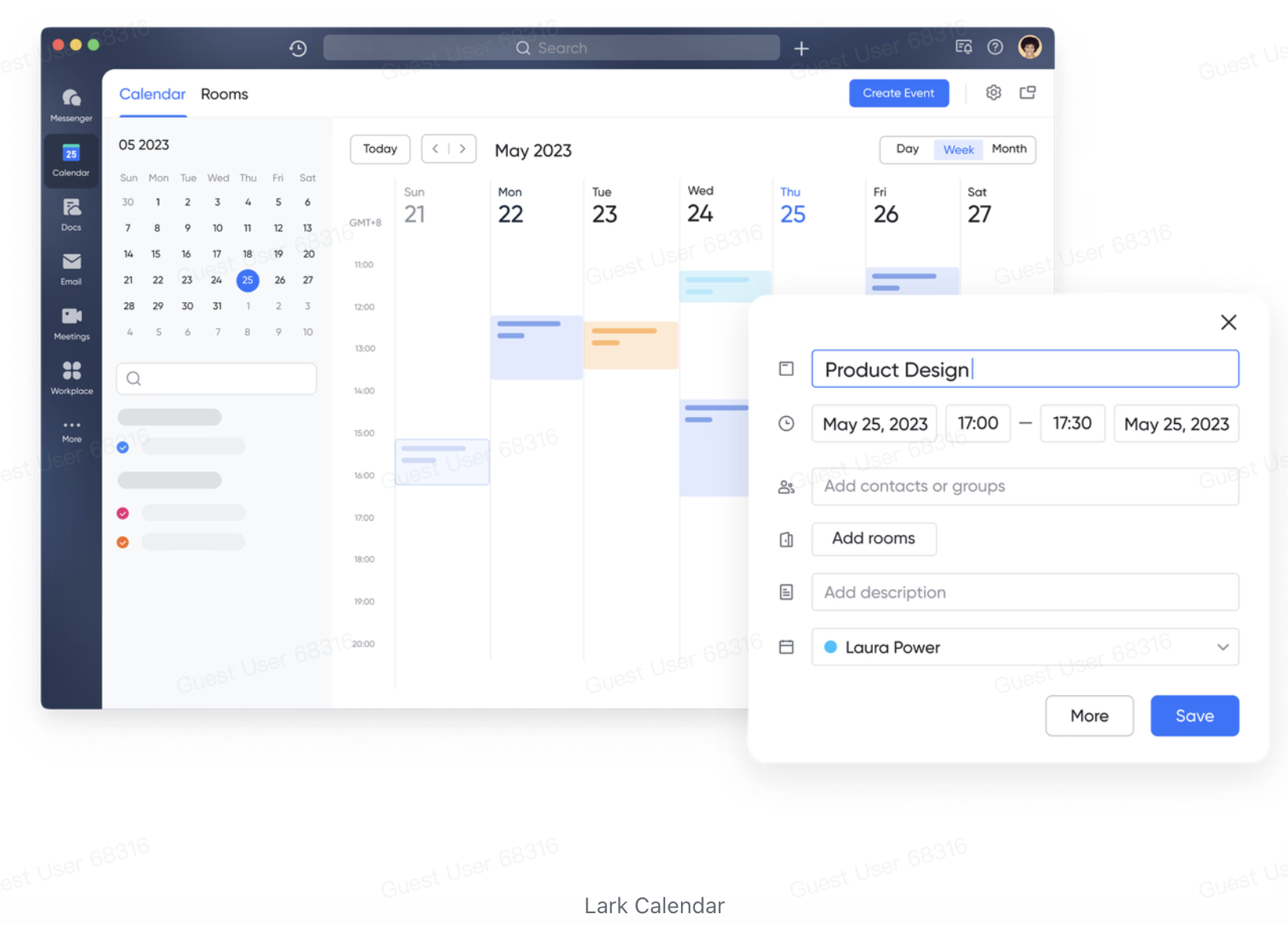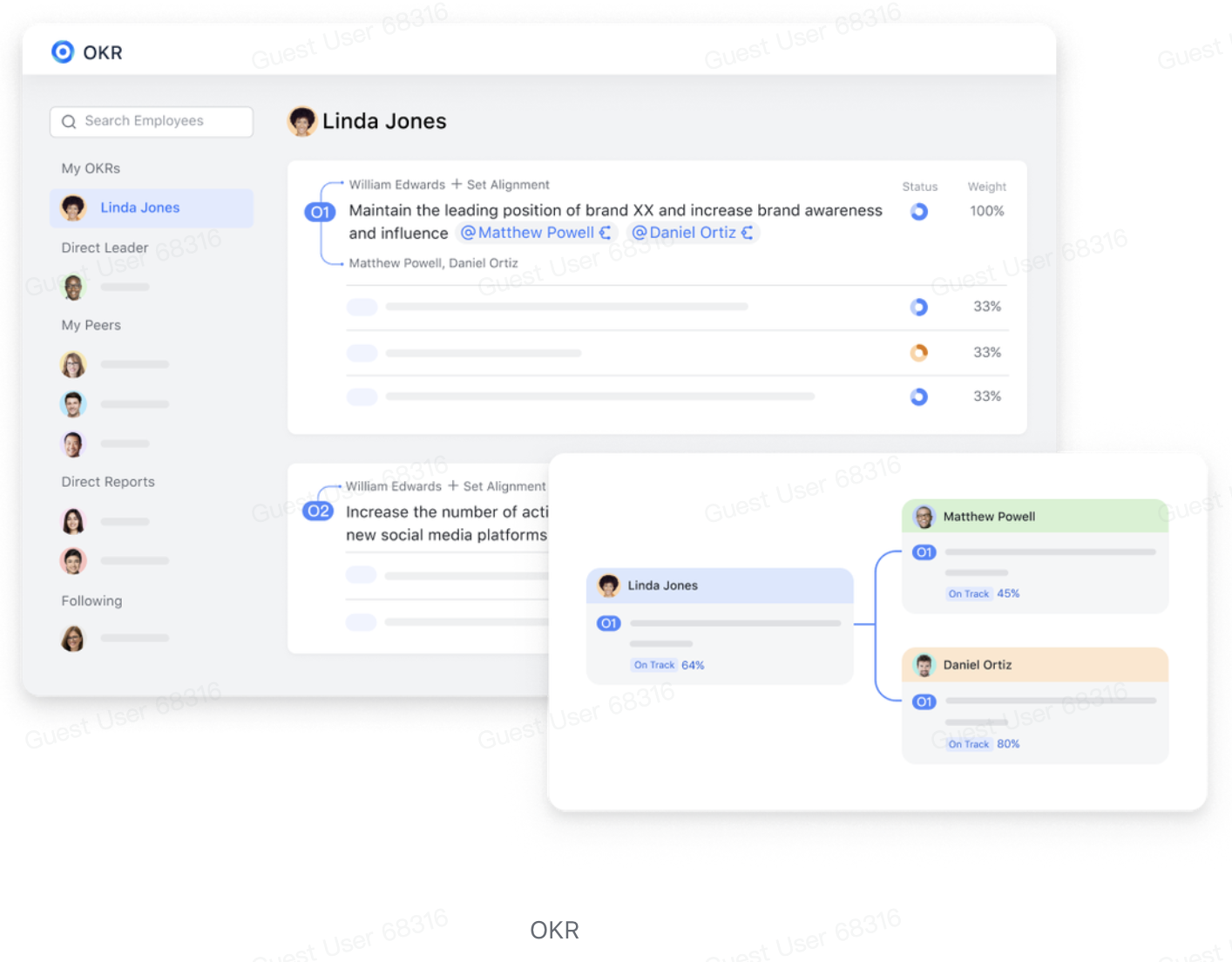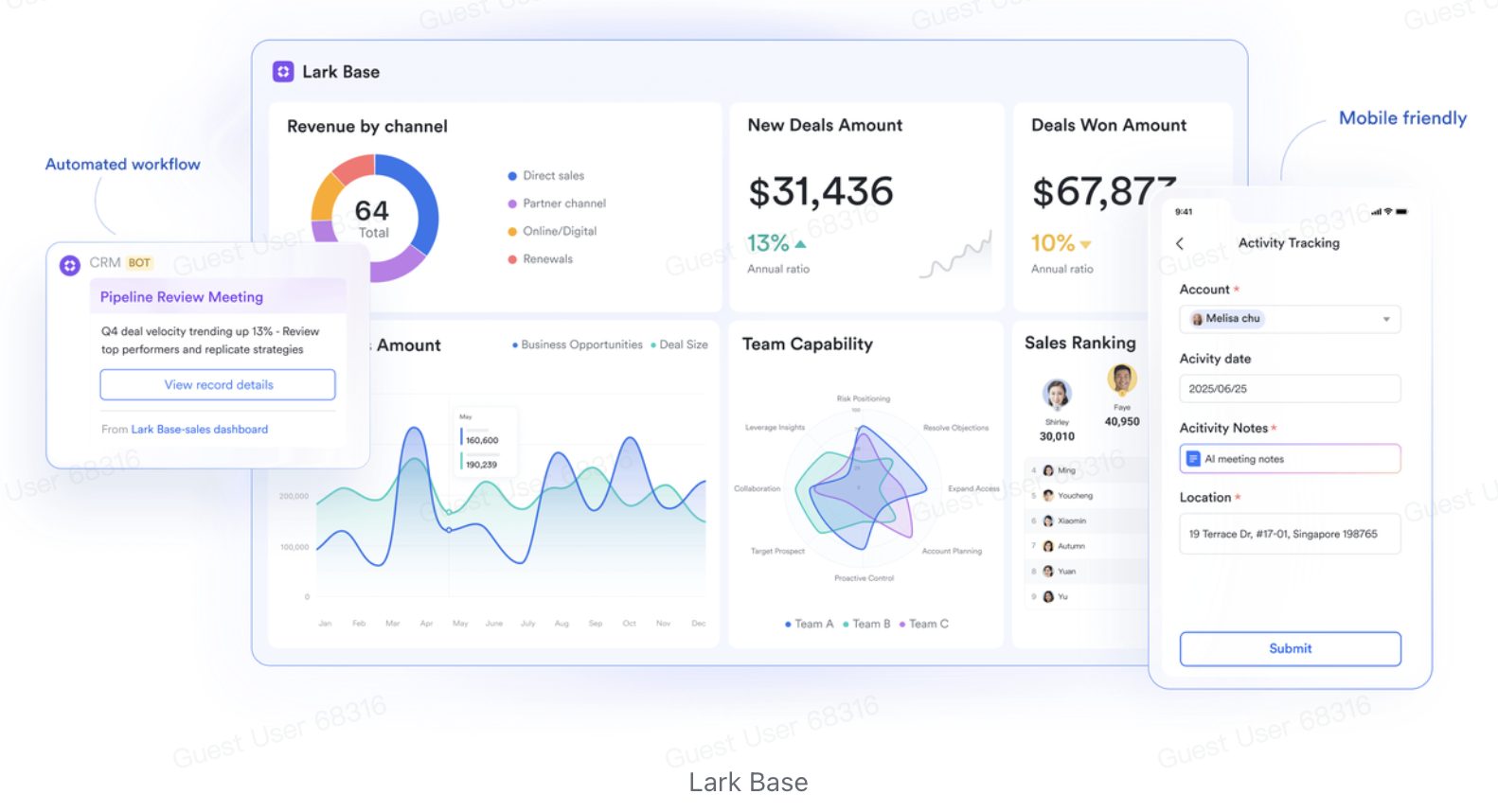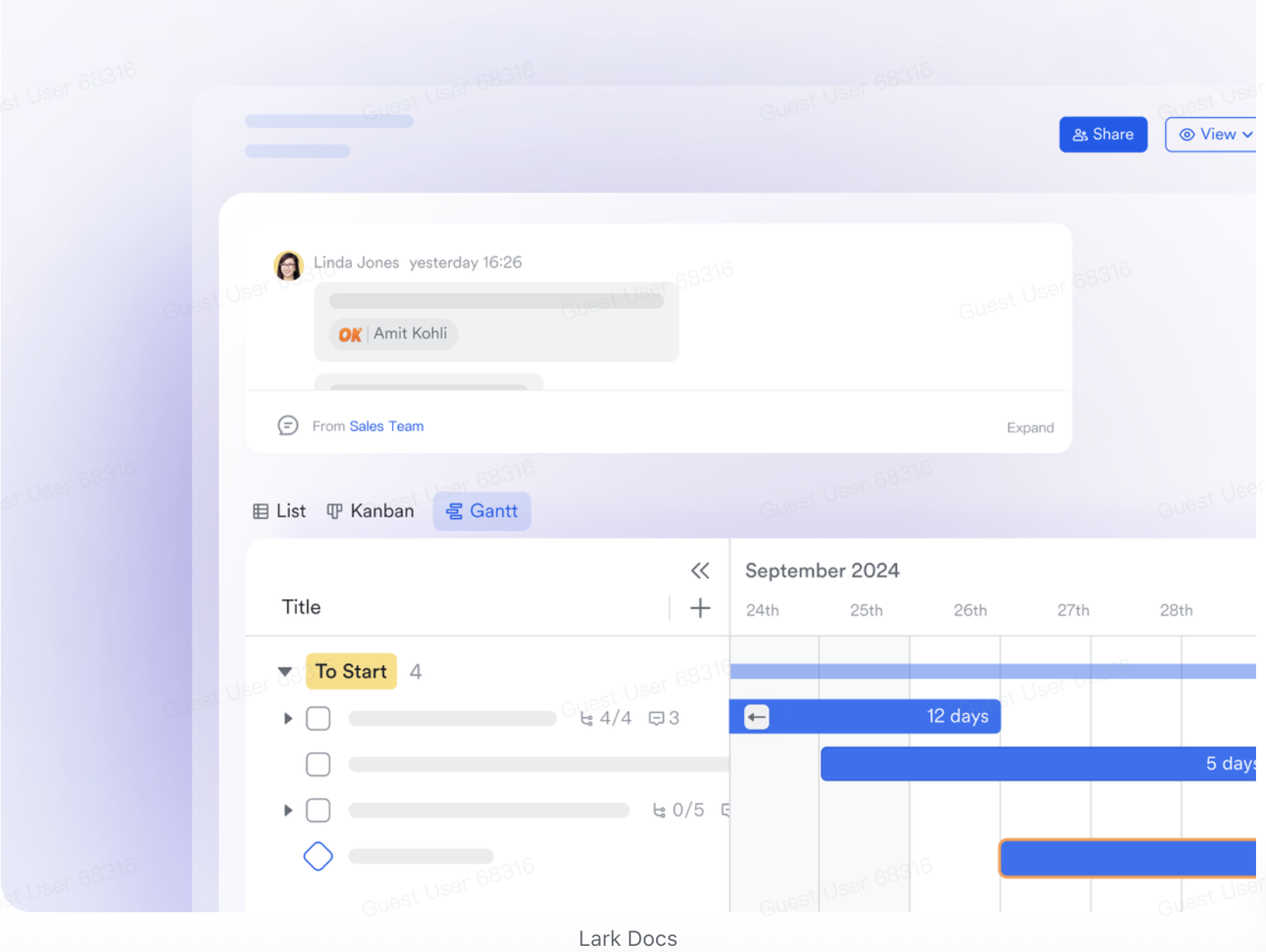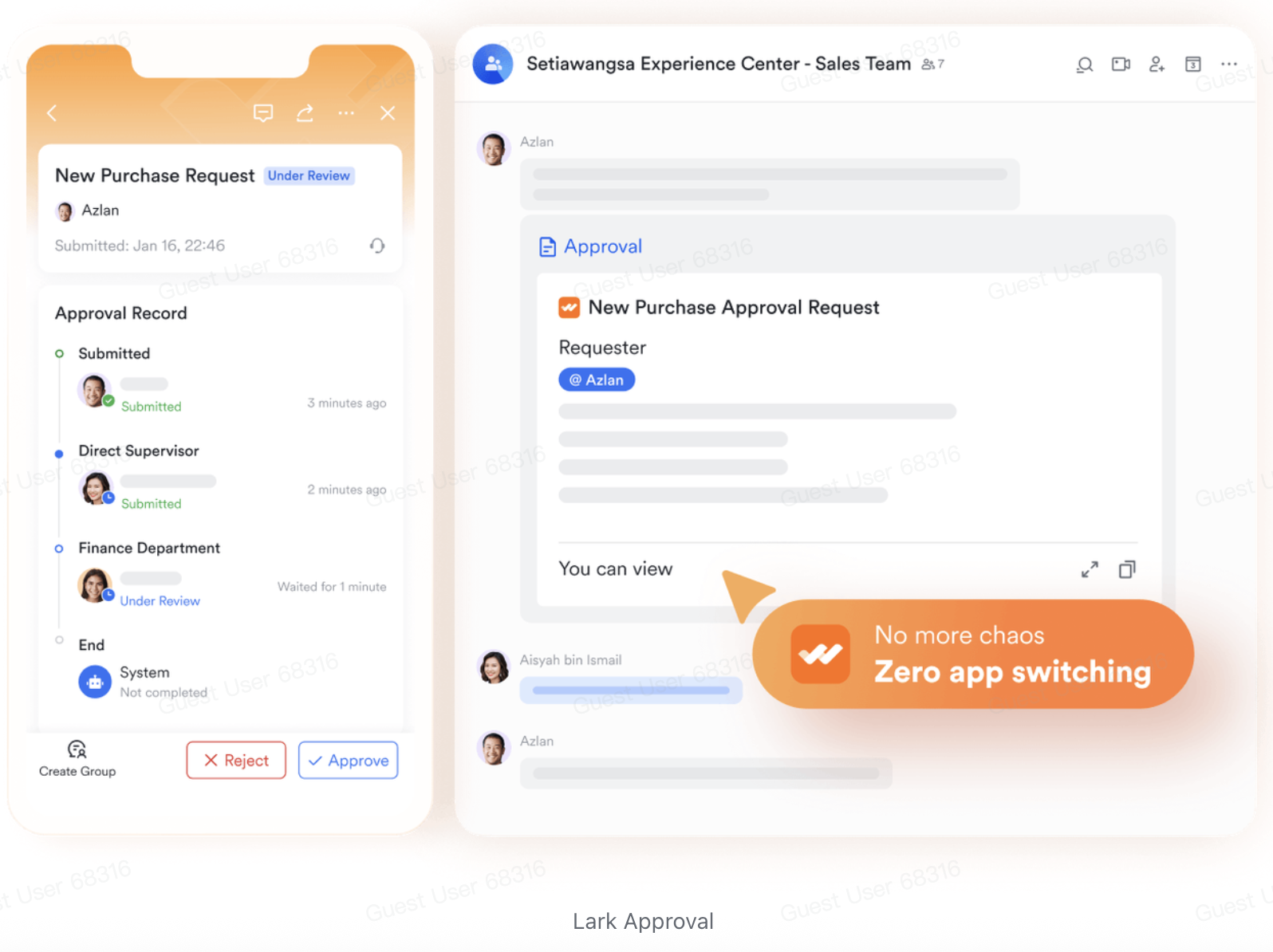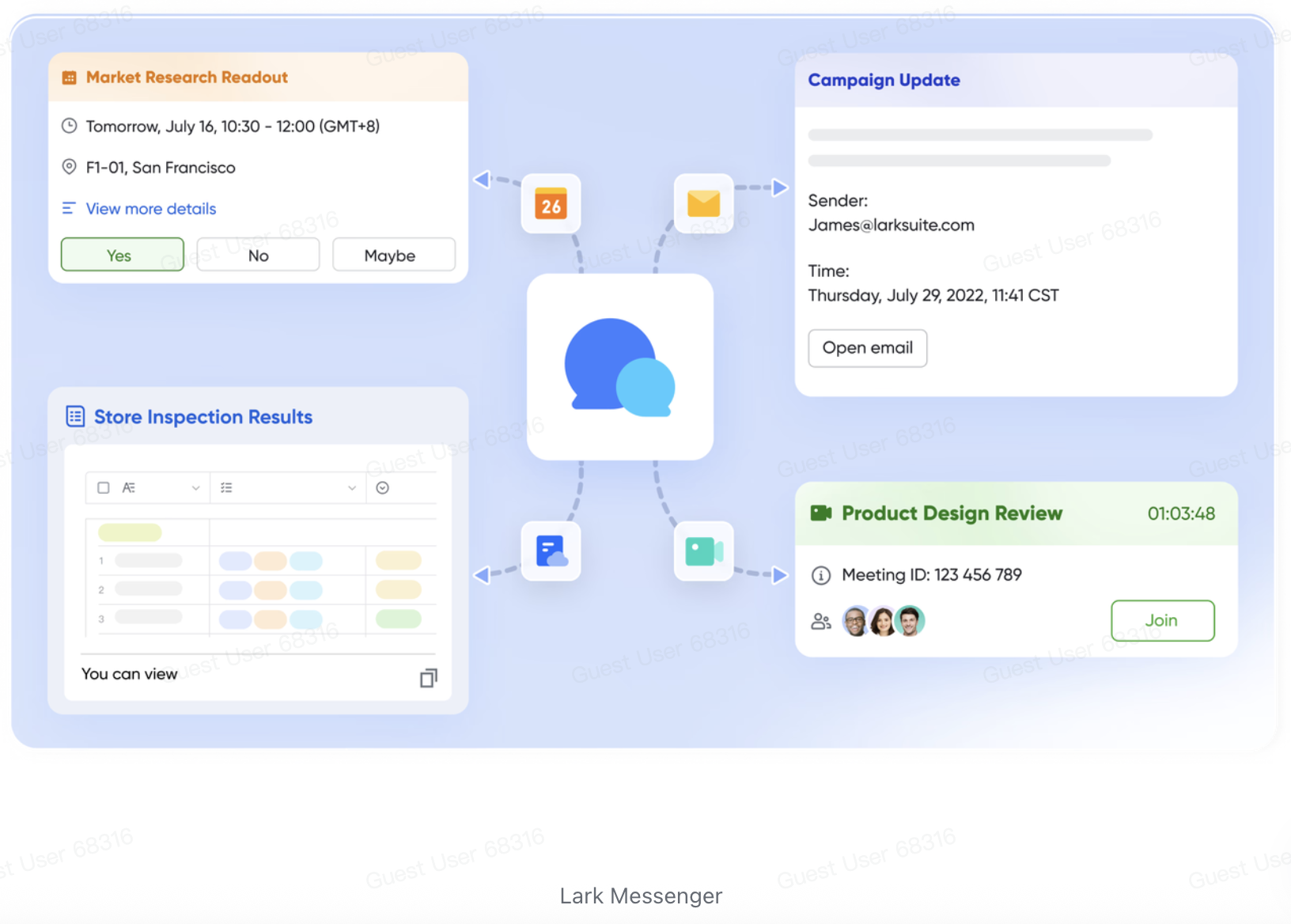To-do lists are super simple for getting stuff done. You write things down, do them, and then cross them off. But in today’s workplaces, just having a ton of tasks listed doesn’t mean you’re getting real results. Teams might be ticking boxes, but managers are still wondering what’s actually been accomplished. The issue is often things aren’t connected. Daily tasks can become routine and disconnected from the main goals.
Lark can fix this. It turns regular tasks into outcomes that actually help the company reach its targets. By linking calendars, documents, approvals, and data to the overall plan, Lark makes sure that what you do each day helps move things forward in the right direction. When your tools are connected, progress isn’t just luck—it’s on purpose. Teams not only see what they need to do but also understand why it’s important. Work becomes more focused, people are more responsible, and every task helps the company grow.
Lark Calendar: placing tasks in time
Tasks lose power when they float in isolation. Lark Calendar ensures they are anchored to schedules, deadlines, and team commitments.
- Personal and shared calendars make priorities visible to everyone.
- Task sync automatically places responsibilities on the calendar.
- Availability views prevent scheduling conflicts.
- Recurring events handle repetitive responsibilities with less manual effort.
When tasks live inside the calendar, they stop being abstract notes and become visible commitments that the entire team can rally around.
Lark OKR: aligning daily work with strategy
To-do lists rarely answer the question “Why does this matter?” Lark OKR provides the link between today’s activities and tomorrow’s outcomes.
- Objectives and key results can be created at the company, team, and individual levels.
- Dashboards provide real-time tracking of progress.
- Reminders keep priorities in focus even when day-to-day work gets busy.
- Admin controls manage cycles and permissions for scalability.
By showing how daily responsibilities tie directly into organizational objectives, OKR gives meaning to tasks. Work stops being about “getting things done” and starts being about “getting the right things done.”
Lark Base: structuring projects for clarity
Checklists are helpful, but they don’t scale when projects grow complex. Lark Base provides a flexible structure for projects, data, and workflows.
- Multiple views—kanban, grid, Gantt, gallery—fit different project styles.
- Dashboards track progress and highlight trends.
- Advanced fields allow teams to capture details beyond status updates.
- Automations handle repetitive steps and maintain consistency.
With these flexbilities, Lark also serves as a versatile CRM app. Sales teams log leads, customer success teams track interactions, and leadership gets visibility into performance. Instead of fragmented lists, Base gives projects clarity and direction.
Lark Docs: capturing strategy in motion
Tasks often lack context, which leads to rework or confusion. Lark Docs creates a shared space where strategy and execution live side by side.
- Real-time co-editing keeps everyone aligned on the latest version.
- Version history protects accuracy as ideas evolve.
- Bi-directional links connect documents to related tasks, projects, or Wiki entries.
- Embeds for Sheets, Slides, or forms keep supporting data close at hand.
Docs make sure daily tasks are supported by clear guidance. Plans, requirements, and ideas don’t vanish after a meeting—they remain accessible and actionable.
Lark Approval: keeping progress unblocked
One of the biggest obstacles between tasks and outcomes is waiting for approval. Delays create bottlenecks, while missing records lead to confusion. Lark Approval standardizes and accelerates decision-making.
- Customizable forms ensure requests include the right information.
- Conditional workflows route approvals automatically to the correct people.
- Notifications in Messenger reduce lag time.
- Sync with Base preserves decision records for accountability.
With Approval, teams can establish an automated workflow that keeps progress moving. Instead of stopping at “waiting for sign-off,” work flows seamlessly into execution.
Lark Messenger: turning conversations into action
Most tasks originate in conversations—”Can you handle this?” or “Let’s schedule a follow-up.” Without the right tools, those moments are forgotten. Lark Messenger ensures they spark action instead.
- Threaded replies keep discussions organized.
- Buzz alerts highlight urgent tasks.
- Pinned messages preserve key decisions or deadlines.
- Quick conversion of messages into tasks, events, or Docs connects talk with execution.
Messenger prevents action items from getting buried in chat history. Every important decision can be captured and turned into the next step forward.
Conclusion
Checking off tasks doesn’t guarantee outcomes. Strategic progress requires tools that connect what people are doing today with where the organization is heading tomorrow. Lark provides that system: Calendar grounds tasks in time, OKR connects them to strategy, Base structures projects, Docs captures context, Approval clears bottlenecks, and Messenger ensures conversations turn into action.
Instead of scattered tools and endless lists, teams gain clarity and direction. Leaders see how work supports strategy. Employees know their efforts contribute to shared goals. And organizations build momentum with less wasted effort.
Among the wide range of project management tools, Lark stands apart by transforming the to-do list into a pathway for strategic outcomes. It’s not about doing more—it’s about ensuring every action matters.

